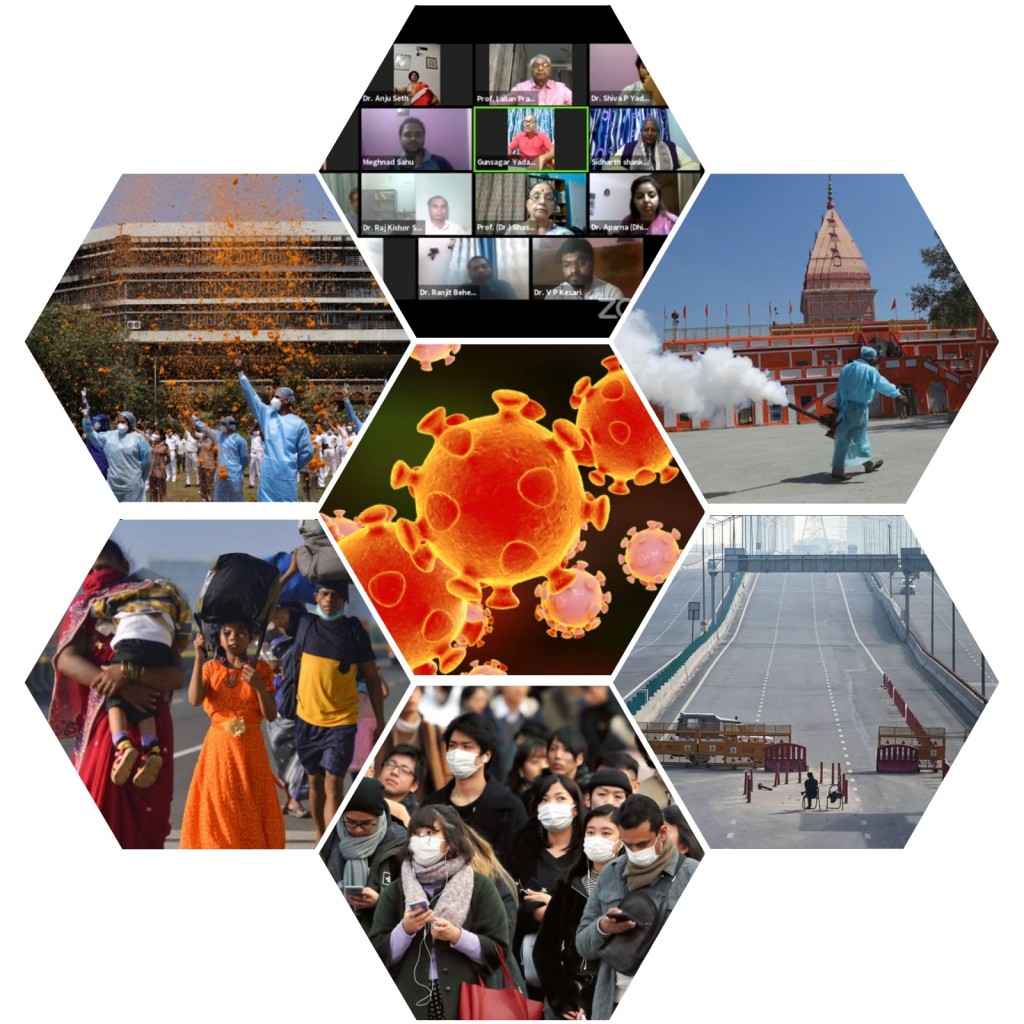आवयोर्युध्यतोरस्य यद्यगन्ता जरासुत|
बन्धून् वधिष्यत्यथवा नेष्यते स्वपुरं बली||47||
“If powerful Jarāsandha comes while we are busy fighting Kālayavana, Jarāsandha may kill our relatives or else take them away to his capital.”
Lord Kṛśṇa led the migration of entire Yadu community from Mathura to Kausalsthali or Dwarka to protect his clan from Kālayavana and Jarāsandha who were ready to attack Mathura from two different directions. Jarāsandha had attacked Mathura 17 times earlier and was defeated by Lord Kṛśṇa every time. The Śrī Kṛśṇa ensured that before the mass exodus, inevitable requirements to sustain the community were arranged at Kausalsthali; Lord Kṛśṇa had ensured adequate safety and livelihood measures, besides offering prayers to Varuṇa deva (Ocean God) to release twelve yojana land for planned city and requested Lord Viśwakarmā to construct a fortified city to ensure safety and welfare of his people.

COVID-19 has brought about unique circumstances in India that have influenced Indian economy, polity, society and environment. Burgeoning population and sudden migration of masses, specially labour class has resulted into an unexpected crisis. It has deeply altered the psyche of every conscious Indian, particularly the poor. Throughout the globe, different governments are fighting the infection in their own ways with their specific internal and external methodologies. Migration figures released by Ministry of Home Affairs (MHA) on 05 April, 2020 showed that over 1.25 million migrant workers were residing in temporary shelters in 27,661 relief camps organized by various state governments in India.

The daily newspaper, ‘The Hindu’s’ legal correspondent on 07 April, 2020 reported that a large number of NGOs (non-governmental organizations) and social groups also came forward to help the victims COVID-19. Chief Justice of India was informed that State and Centre authorities provided food to over 54 lakhs and NGOS helped out over 30 lakh displaced people at different places in the country. “This reverse migration is one of the largest in the history”, says, The Wall Street Journal. People are moving from cities to rural areas due to panic created by the pandemic.
A large number of people from states like Uttar Pradesh (UP), Bihar, Madhya Pradesh (MP), Punjab, Rajasthan, Uttarakhand, West Bengal and J&K migrate every year to metros and states with ample opportunities and prospects of employment in different sectors of economic activities. UP followed by Bihar are the biggest donor states and Maharashtra followed by Delhi, Tamil Nadu, Gujarat, Andhra Pradesh and Kerala are the largest recipient states in the migration pattern. Those in search of employment in any form are primarily poor people with limited skills and get jobs in power, energy, construction sectors. 2011 census of migration by NSSO states that almost 400 million population or one third of India migrated in search of jobs. Rural to urban migration figures stand 22.1% where most men get absorbed in industrial and infrastructure sectors and women in cottage/MSME/Homes. A view of the migration pattern provides enough evidences to suggest its importance in building Indian economy. South Asia Journal, 2011 reflects a vibrant state of internal Indian migration figures.

The nature of recent migration during April-May 2020 projects a new pattern for it is not part the routine regular move of people to and fro from their native places; it is a forced reverse migration due to pandemic. Centre and state governments were busy managing the COVID-19 crisis and urban and metro residents locked themselves. It appeared that that’s the end of their hope of survival and possibly that psychological stress with no clear statement and policy direction from state governments and civil administration were major reasons for instant reaction. Sudden movement was unexpected and unanticipated; it dishonored all rules and regulations of COVID-19 and added a new dimension to existing COVID-19 crisis. If the government administration had been proactive to social undercurrent and adaptive to handle human disasters; this crisis of reverse migration could have been mitigated. The exodus of migrant workers could have been prevented or at least better managed to ease their return. The need was to realize the enormity of this unfortunate crisis and its professional management. The management of the crowd involved use of police force and punishing the hungry men and women without any remorse and emotions is unexpected of a civilized democratic egalitarian society and state. The same very people who were supporting pillars of the society, became social burden just because they did not belong where they worked, and were poor.

Human history has experienced pandemic in the past as well and managed by the administration successfully. Śrī Kṛśṇa provides a vivid example of mass exodus in Dvāpara Yuga and Paliwal community in medieval period of Indian history. Ancient Indian civilization, the Harappan civilization migrated from Indus valley to Indo-Gangetic plains. These are but some of the examples to draw our lessons from. Harappan civilization flourished after migration. Unfortunately, the present political and civil administrative structure is struggling to help migrants reach their home destinations. The determination of governments and people in present circumstances will decide what lies in store for our next generation.
–Brig JS Rajpurohit, Ph.D. Group Commander, Group HQ NCC, Gorakhpur (UP)


